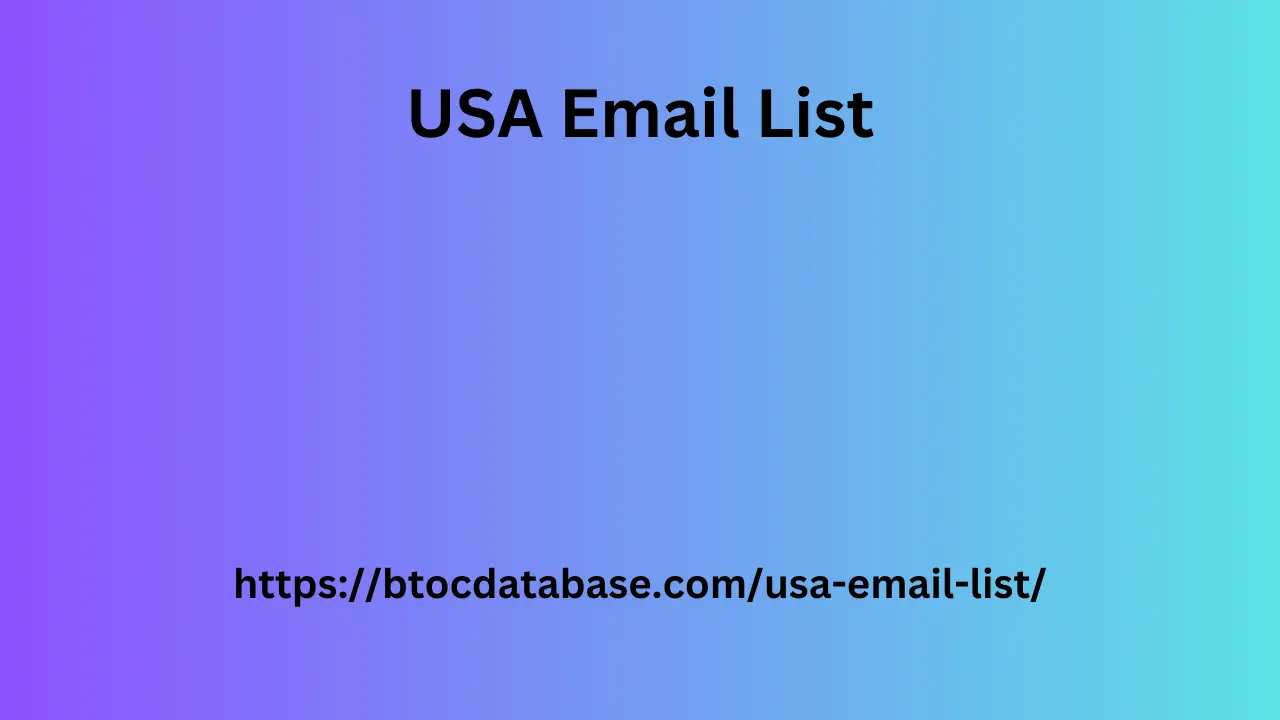In the competitive world of B2B marketing, effective communication is paramount. Leveraging USA phone numbers can significantly enhance your marketing efforts, providing a direct line to potential clients and partners. This article will explore various strategies for utilizing USA phone numbers in B2B marketing, discussing their benefits, best practices, and innovative approaches to maximize their impact.
Understanding B2B Marketing
1. What is B2B Marketing?
B2B (Business-to-Business) marketing involves transactions between businesses rather than between businesses and individual consumers. This type of marketing focuses on selling products or services to other businesses.
A. Key Characteristics of B2B Marketing
Longer Sales Cycles: B2B purchases often involve multiple decision-makers and longer evaluation periods.
Relationship Building: Establishing strong relationships is crucial for success in B2B marketing.
Targeted Audience: B2B marketers must identify specific industries and companies that are likely to benefit from their offerings.
2. The Importance of Communication in B2B Marketing
Effective communication is essential in B2B marketing for building relationships, conveying value, and facilitating transactions.
A. Direct Engagement
Personalized Communication: Phone conversations allow for tailored interactions that resonate with potential clients.
Immediate Feedback: Engaging via phone can provide immediate insights into customer needs and concerns.
B. Building Trust
Establishing Credibility: Having a dedicated phone number enhances your business's credibility and professionalism.
Fostering Relationships: Regular communication through phone calls helps build trust and long-term partnerships.
Benefits of Using USA Phone Numbers in B2B Marketing
1. Enhanced Customer Engagement
Using USA phone numbers can significantly improve customer engagement in B2B marketing.
A. Direct Access to Decision-Makers
Reaching Key Stakeholders: Phone calls allow you to connect directly with decision-makers, increasing the likelihood of successful outreach.
Personal Touch: A phone conversation can create a more personal connection than email or other digital methods.
B. Increased Responsiveness
Immediate Communication: Phone calls facilitate real-time discussions, allowing for quicker responses to inquiries and concerns.
Follow-Up Opportunities: Using phone numbers allows for timely follow-ups, keeping your business top-of-mind for prospects.
2. Improved Lead Generation
USA phone numbers can play a crucial role in generating leads for B2B businesses.
A. Targeted Cold Calling
Identifying Prospects: Using a targeted list of leads
USA Email List enables effective cold calling, helping to identify potential clients.
Qualifying Leads: Phone conversations can help qualify leads quickly, allowing you to focus on the most promising prospects.
B. Nurturing Relationships
Building Rapport: Regular phone interactions enable you to build rapport with potential clients, increasing the chances of conversion.
Understanding Needs: Engaging prospects in conversation allows you to understand their needs better and tailor your offerings accordingly.

3. Increased Brand Awareness
Leveraging USA phone numbers can enhance brand awareness in your target market.
A. Consistent Communication
Regular Outreach: Regular phone communication helps reinforce your brand presence in the minds of potential clients.
Brand Messaging: Phone calls provide an opportunity to convey your brand's unique value proposition clearly.
B. Networking Opportunities
Building Connections: Phone calls can facilitate networking opportunities with other businesses, enhancing your brand's visibility.
Partnership Development: Engaging with other businesses can lead to potential partnerships and collaborations.
Strategies to Leverage USA Phone Numbers in B2B Marketing
1. Establish a Dedicated Business Phone Line
Creating a dedicated phone line for your business is essential for effective B2B marketing.
A. Choosing the Right Phone Number
Local vs. Toll-Free: Decide whether a local or toll-free number is more appropriate for your business. Local numbers can create a sense of community, while toll-free numbers can enhance accessibility.
Vanity Numbers: Consider using a vanity number that is easy to remember and relates to your business, making it more recognizable.
B. Setting Up Voicemail and Call Forwarding
Professional Voicemail: A professional voicemail message can ensure that callers receive clear instructions on how to leave messages.
Call Forwarding Options: Implementing call forwarding allows you to direct calls to the appropriate team members promptly.
2. Implement Call Tracking Systems
Call tracking systems can provide valuable insights into your marketing efforts.
A. Monitoring Call Performance
Tracking Metrics: Analyze metrics such as call volume, duration, and outcomes to assess the effectiveness of your phone outreach.
Identifying Trends: Monitoring call data can help identify trends in customer inquiries and preferences, informing your marketing strategy.
B. Call Recording for Quality Assurance
Training Opportunities: Recording calls can provide valuable training material for your sales team, helping them improve their communication skills.
Quality Control: Regularly reviewing call recordings can ensure that your team adheres to best practices and maintains a high level of service.
3. Use Phone Numbers in Marketing Campaigns
Integrating phone numbers into your marketing campaigns can enhance engagement.
A. Including Phone Numbers in Marketing Materials
Brochures and Flyers: Ensure that all printed materials include your business phone number for easy access.
Digital Marketing: Incorporate your phone number in email signatures, social media profiles, and website contact pages.
B. Promotional Campaigns
Call-to-Action (CTA): Use strong CTAs in your marketing materials that encourage prospects to call for more information or special offers.
Limited-Time Offers: Promote time-sensitive offers that require a phone call to create urgency and increase engagement.
4. Engage in Cold Calling and Follow-Up
Cold calling remains a powerful tool in B2B marketing when executed effectively.
A. Research Targeted Leads
Identifying Prospects: Use tools like LinkedIn and industry databases to identify potential leads and gather relevant information before making calls.
Personalization: Tailor your cold calling script to address the specific needs and pain points of each prospect.
B. Follow-Up Strategies
Timely Follow-Ups: After initial contact, follow up promptly to keep the conversation going and demonstrate your commitment.
Multiple Touchpoints: Utilize a combination of calls, emails, and social media outreach to maintain engagement with prospects.
